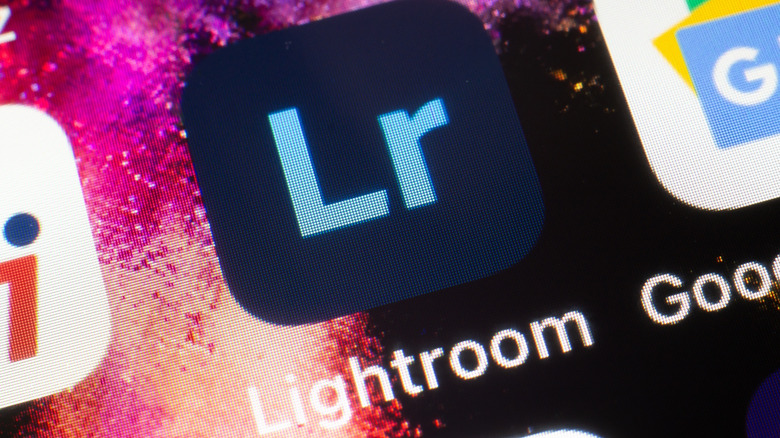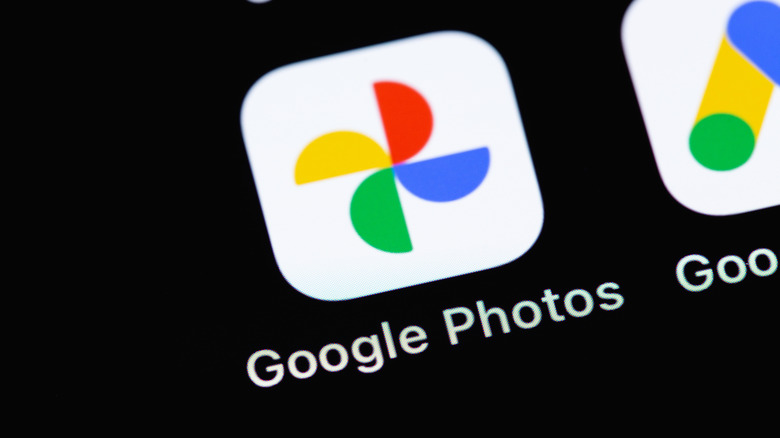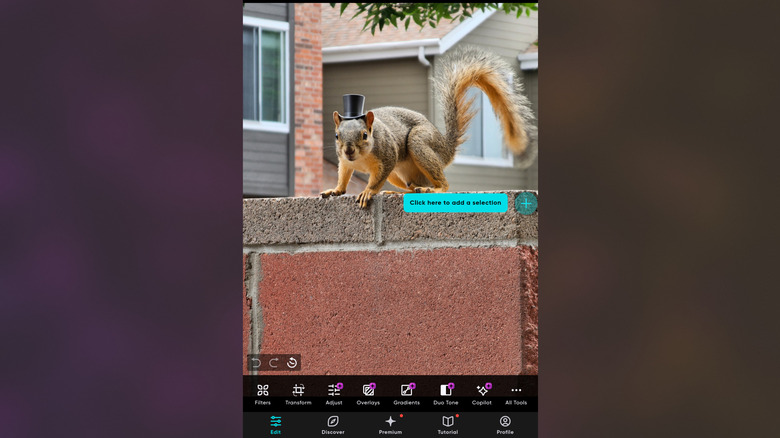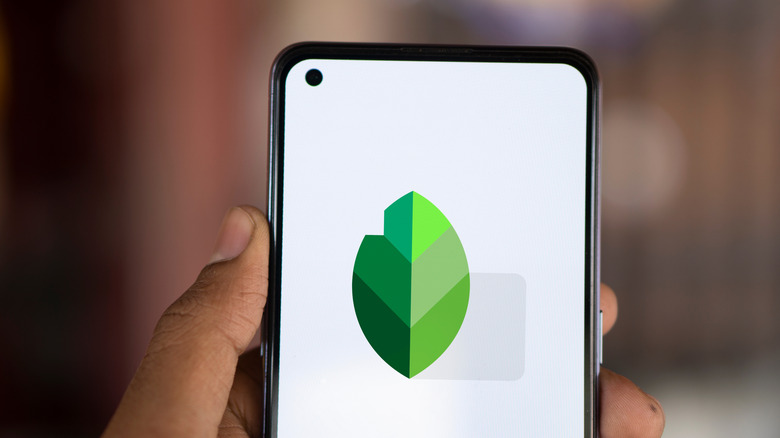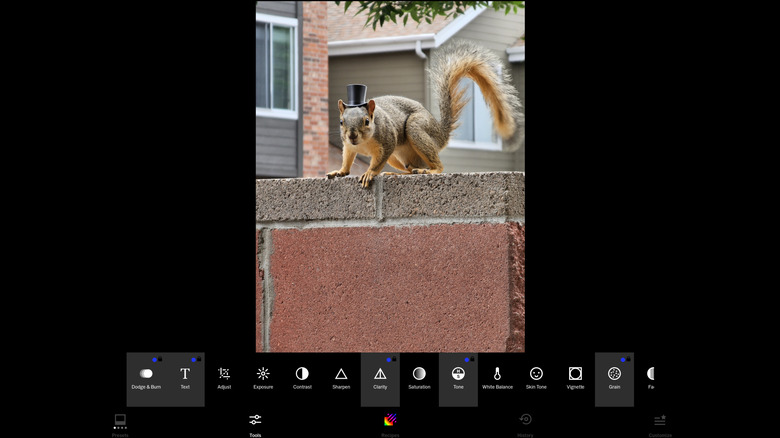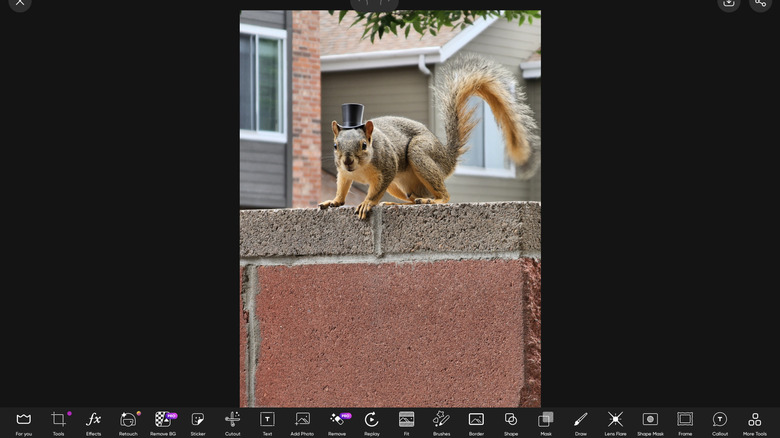6 Capable Alternatives To Adobe Lightroom For Editing Photos On Your Phone
People with experience in photography know that Adobe Lightroom is considered the gold standard for photo editing on a computer. But when it comes to editing from your phone, which is becoming more common even for serious photographers, Lightroom can fall short of expectations. Not only is the mobile version severely limited compared to its desktop counterpart, but you need to pay for one of Adobe's subscriptions in order to take full advantage of it. You don't have to stick with Lightroom when other mobile photo editors outmatch it with features, often while charging far less for the privilege, letting you purchase a pro version outright, or even being free. Whether you're using an iPhone or an Android, there are plenty of photo editing apps that offer suites of tools revealing the mobile version of Lightroom. You can pick one, or mix and match them to edit your photos in whichever workflow is best for your needs.
As a writer who takes photos to accompany my articles, I often find myself in need of quick touch-ups for those shots. Lightroom is my go-to when I'm near my PC, but I switched to Samsung DeX as my main operating system last year and now work mostly from my tablet. That means I've spent a lot of time testing out mobile photo editing tools, and I've found a number of great Lightroom alternatives. Whether you're a seasoned photographer who needs to make precise, granular adjustments, or even if you just need to tune things up for an Instagram dump, one of these Lightroom replacements will most likely suit your needs. Here are the six most capable mobile alternatives I've found to Adobe Lightroom.
Google Photos
Don't click away! Yes, Google Photos (iOS, Android) is a consumer-facing service that simply can't match the kind of professional editing results desktop Lightroom users are used to. But compared to the mobile version of Lightroom, Photos can go bar for bar. And when it comes to AI and machine-learning based editing tools, Photos has a clear advantage.
Google Photos is most useful when you just want to make some quick edits to ready a photo for social media. More often than not, its suggested edits add a splash of dynamism to a photo, fix basic lighting and contrast issues, and get it ready for the 'gram in a matter of moments. But if you want to do deeper, more granular edits, Photos has you covered, too. It includes tools many other apps neglect, such as white and black point adjustment, blue tone, and skin tone. Moreover, Photos plays nice with other editing apps. You can export directly from its editor into another piece of software like Lightroom, Photoshop, or Snapseed, keeping your edits intact as you do so.
But it's once you dig into Google Photos' free AI features that it really shines. I'm a big fan of the Portrait Lighting feature, which lets you add lighting elements to a photo. It's uncanny how well Google's AI can detect the three-dimensional environment captured in a two-dimensional photo, and those capabilities really shine here. There's also Magic Eraser, which lets you use generative fill to remove objects from a shot, Magic Editor, which lets you reposition them within the frame, and Photo Unblur, which does exactly what it says and is great for when a subject moves just as you snap a group shot.
Polarr
If you're looking to edit photos with a bit more granularity than the mobile version of Adobe Lightroom can offer, Polarr (iOS, Android) is a great option available for both iOS and Android. Its main drawback is a subscription, which costs $10 a month or $35 a year. That's not an atrocious price, though it does pale in comparison to the wide range of tools you can get with an Adobe Creative Cloud subscription, of which Lightroom is merely one among many. There's a free tier of Polarr, but it may as well be a trial, since you only get one photo export a day.
For your money, however, you get access to a legitimately great photo editor with some seriously smart features and a user interface that should be immediately intuitive to most people. My favorite feature while testing this app was its smart layers. It was immediately able to detect my dog in a photo and slice that portion of the image onto its own editing layer, and with another couple of taps it also identified the TV stand behind him.
Polarr also has a web app with a UI that looks a lot like that of Lightroom, and a beta version called Polarr Next that runs only on desktop OSes, which allows you to train its AI on the way you like to edit photos. That sounds cool, but this article isn't about desktop apps. However, the fact that it exists is a big value add. It all makes sense when you learn that the company's founder is a veteran of Google and Qualcomm.
Snapseed
Snapseed (iOS, Android) has been on a strange journey. After its parent company was acquired by Google in 2012, it's been a bit out of place in the company's portfolio since it faces internal competition from other products like Google Photos. But this app remains the best alternative to mobile Lightroom if you want simple, stylish edits. You won't find professional grade tools here. Anything resembling them, like the curve editor, is overly simplified. But if your goal is to give your smartphone photos a little zhuzh, you can pop out a pretty decent edit within just a few seconds.
If this app cost a single cent, it would hardly be worth recommending. But as the only app on this list that isn't looking for your money, I'd be remiss to leave it off. Despite the fact it hasn't quite kept pace with more advanced photo editors, Snapseed has mastered its simplicity. Filters like Drama, Vintage, and Glamour Glow all look great on nearly any photo (at least by the standards of an Instagram post). And there are tools here I have yet to see elsewhere, like the Head Pose feature, which lets you twist someone's head a few degrees in any direction. It's probably just a warp tool in disguise, but it feels uncanny, even compared to some of the best AI tools out there.
What I like most about Snapseed is that its filters seem to work without changing the characteristic essence of a photo. Whereas other editors can make a picture feel less original, Google's oft-ignored photography suite preserves the special something that makes a picture unique. And, once again, it's the only Lightroom alternative that won't ask you to empty your wallet.
Hypic
From ByteDance, the company that brought you the extremely popular and probably short-lived TikTok and the magic-feeling video editor CapCut, comes Hypic (iOS, Android), one of the best AI-powered mobile photo editors on the market. Available for both iOS and Android, Hypic is one of the few apps with AI features that seem to actually work, allowing you to enhance images, adjust faces, and more in only a few taps.
As with many other AI mobile editors, Hypic works best with portrait photography. Its one-tap AI tools are mostly geared toward adding more detail and removing flaws in faces. However, a few tools will simply overhaul an entire image. I haven't noticed some of the strange artifacting that usually accompanies AI image editing, but your results may vary. You'll also find a wide selection of filters, which vary from subtle to garish. And, of course, there's a full suite of traditional editing tools. Hypic hasn't neglected the basics like some other AI photo apps, and you'll find things like a full-spectrum curve editor, HSL (hue, saturation, balance), and even the ability to slice and edit individual layers.
Hypic does charge a subscription of $7 a month or $36 a year, behind which most of the best AI features are locked. You can try those features out before you subscribe, but you cannot export those edits until you do so. Personally, I have enough subscriptions to last a lifetime and would prefer to pay for software outright. Moreover, I wish ByteDance offered a subscription for a CapCut and Hypic bundle, since I already pay for the former. Still, it's a better price than other subscription based apps on this list, and its AI features yielded better results than those other apps in my testing.
VSCO
For several years, VSCO (iOS, Android) was best known for the type of user it attracted, with memes constantly poking fun at "VSCO girls" who treated their wardrobes with the same aesthetic fetishization as they did their Instagram photo dumps. But removed from its reputation, VSCO is a vibrant social network that manages to replicate what Instagram did prior to being bought out by Meta while also providing a unique approach to photo editing.
VSCO centers around film-like filters that drastically alter any photo they're applied to. If you love vintage styles, you'll probably love these filters. But, of course, Lightroom users are accustomed to far more granular editing, and VSCO isn't devoid of the standard editing tools you're used to. It's not as fully featured in that department as other apps on this list, but it's certainly covering the basics. Exposure, contrast, white balance, tone, and so forth are all here. You can also create your own, custom presets, which VSCO calls Recipes. It's useful if you're batch editing a bunch of similar photos.
What really sets VSCO apart from the competition is its built-in social network, which has a niche but vibrant community of amateur and professional photographers. Again, the aesthetic trends here are very 2012-Instagram inspired, but for anyone nostalgic for that era, the social aspect of the app might well feel like a time capsule. Ultimately, VSCO probably won't be your go-to if you use an expensive, standalone camera. But for Lightroom users who don't need everything Adobe offers, this could be your new solution. If you can stomach the subscription, that is. VSCO Pro runs $60 annually or $13 a month, which is a bit hard to swallow.
Picsart
On its app listings, Picsart (iOS, Android) bills itself as an "AI photo editor." And sure, like every other company hoping to stay relevant in the mid-2020s, it has added a few AI features, including text-to-image generation. But unlike AI-centric apps such as Google Photos or Hypic, Picsart remains a traditional photo editor at its core. And it's an astonishingly robust one at that, with a feature set that matches that of Lightroom's mobile version.
In fact, the AI aspects of Picsart are pretty disappointing. The AI Enhance feature made my face look as if I had smeared Vaseline on the camera lens. But Picsart shines elsewhere. In addition to a full suite of the usual manual editing tools you'd expect from a Lightroom competitor, Picsart has a whole slew of extras. From automatic background removal and layer based editing to face manipulation and blemish removal, it's a robust app. One of my few complaints is that it has so many options that the UI gets a bit confusing when you're several layers deep, but that's the double-edged sword that always accompanies feature depth.
As with nearly every app on this list, Picsart charges a subscription for access to some features. Most AI capabilities, stock photo and video libraries, alternate export formats like PNG, and the ability to use the app on multiple devices are all locked behind that paywall. Picsart charges $73 annually or $12 monthly for those privileges. If you see yourself becoming heavily invested in Picsart as your primary editor, that may be worth it, but make sure to use the free trial before forking over your hard-earned dollars, and compare it against other, cheaper options.
